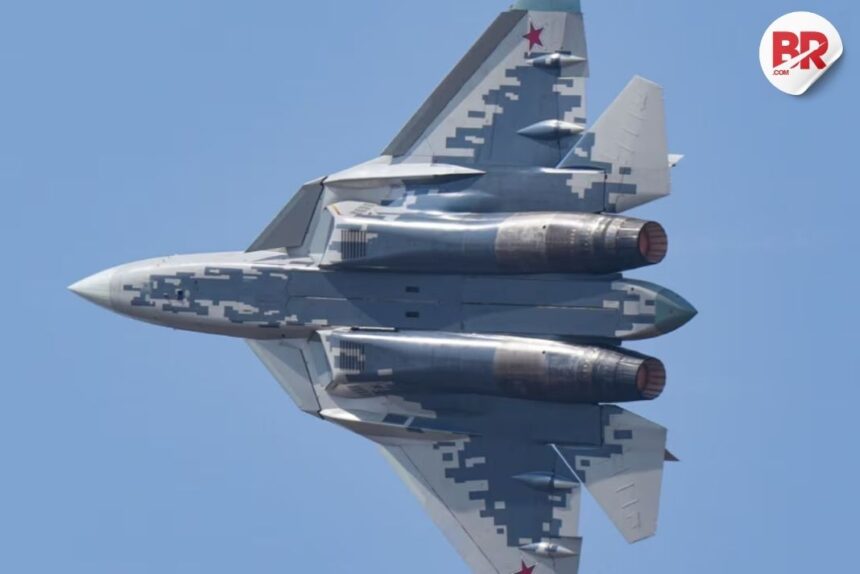
Russia has officially offered India the Su-57E, its most advanced stealth jet, with a package that includes full tech transfer, deep localization, and local manufacturing under the ‘Make-in-India’ initiative. As confirmed by the Indian Defence Research Wing, this is Russia’s boldest attempt yet to strengthen India’s fifth-generation air combat game.
So what’s in it for India?
For starters, this isn’t just about shiny new jets. This offer is about power, control, and independence. Russia is not only willing to sell the Su-57E off the shelf (20–30 units to start), but also help India build it at home—with access to critical systems, source codes, and custom upgrades.

In plain English? India won’t just fly the jet. It’ll help design, code, and shape the damn thing.
Nashik: Future Stealth Capital?
Russia’s defense conglomerate Rostec has already marked HAL’s Nashik facility for local production. Why? Because it’s already tooled up from building over 220 Su-30MKIs and can hit the ground running. With existing infrastructure, Nashik could evolve into India’s stealth fighter hub.
Also Read How Many Rafale Jets Did India Lose in Clash with Pakistan? See What the Defence Chief Said
Tech That Talks to India’s Needs
The Su-57E will support integration with Indian-developed systems like the Super-30 upgrade mission computer and weapons. It’s also expected to pack a Gallium Nitride (GaN)-based AESA radar, making it future-ready for electronic warfare and target tracking.
Yes, you read that right—Russia is ready to play nice with Indian tech, even letting HAL and private firms get involved. That’s a big deal in a space where most countries guard their military tech like grandma’s gold.
Fast Track + Full Control
While the localized Su-57E might take 3–4 years, Russia has offered to deliver jets quickly to get the Indian Air Force up to speed fast. This mix of short-term firepower and long-term self-reliance makes the deal unique.
Why Now?
Following Operation Sindoor and rising India-Pakistan tension, this move signals India’s intent to dominate the skies—not just with imports but with control. It’s about not having to look over your shoulder every time you need a spare part or system patch.
As The Print once noted, India’s push for defense self-reliance has long been hampered by shallow tech access. This offer changes that equation.
This isn’t just about planes. It’s about India not being stuck in the back seat of its own defense ride. If India says yes, it won’t just be buying jets—it’ll be building the cockpit.
Also Read Who Gets HAL’s Jet Plant? Karnataka Fights Andhra’s Pitch- What We Know So Far












